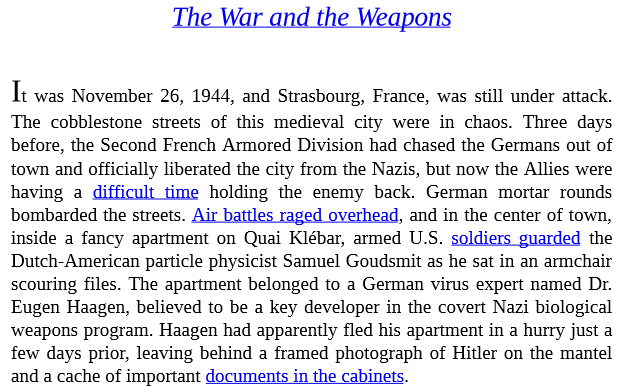
The cost was sheltering men like Otto Ambros, convicted and imprisoned for managing the slave-labor factory at Auschwitz for IG Farben. German science allowed American consumers to consume fruit juices without heat sterilization and women to wear hosiery that didn’t run.

Kurt Blome, whom American officials had tried to convict of war crimes, never made it but worked for the United States from Germany. Some of them got away to Soviet Russia, and some, like Dr. One criterion applied in the selection: If the Soviets want him, we’ll take him. So at war’s end it came to this: Would the Nazi scientists be prosecuted - or hired? The United States largely chose the latter, and the first load, including von Braun, was flown to the naval station at Squantum and then to an island in Boston Harbor, where they busied themselves playing Monopoly.

Along with the scientists, huge payloads of documents and rocket parts were shipped here. It did not matter that targets such as von Braun, himself a high-ranking SS officer, had initiated the use of slave workers, thousands of whom perished in underground tunnels. The allies knew their quarry: a list of Germany’s top scientists was found in a toilet in Bonn, another in a scientists’ house outside Hannover, a third (a list of telephone extensions) was tacked on the wall in the V-2 factory. The British did, too, led by a spy commando named Ian Fleming.

He hid away his most vital classified V-2 documents.Īnd so amid the rubble of the war, American agents raced to gather the war’s most valuable gleanings, the rocket men.

Knowing that, von Braun was thinking ahead, and before the war even ended he was laying the groundwork for offering his expertise to the Americans, who were then moving toward Germany’s borders and victory. Operation Paperclip grew out of the acknowledgment that the Germans, who employed slave labor in their underground V-2 factories, were as much as two decades ahead of America in rocket science. McCloy, who granted clemency to Germans convicted at Nuremberg. Most of the German principals in this book are virtually unknown to Americans today - Wernher von Braun, architect of the mighty Saturn V rocket, is the exception - but the American principals were men of power, including John J.


 0 kommentar(er)
0 kommentar(er)
